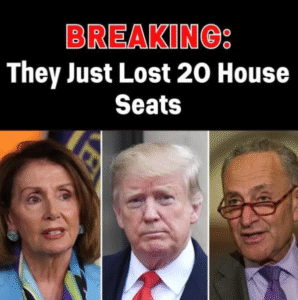The Coming Political Earthquake: How America’s Great Migration Could Reshape Presidential Elections Forever
America is on the move. Not just in the literal sense of people packing boxes and crossing state lines, but in a deeper, more transformative way—one that’s quietly redrawing the political map. The Great Migration of the 21st century isn’t about Dust Bowl refugees or post-war suburbanization. It’s about a new wave of demographic upheaval: immigrants reshaping cities, retirees fleeing high-tax states, and young professionals chasing affordability and opportunity. And it’s happening fast.
According to the latest Census Bureau data, the U.S. population surged past 341 million in early 2025, reversing years of pandemic-era stagnation. But this rebound isn’t driven by births or domestic mobility. It’s powered almost entirely by immigration. Between 2023 and 2024, international migration accounted for 84% of the nation’s population growth. That’s not just a statistic—it’s a turning point.
And it’s about to shake the foundations of presidential politics.
🌍 Immigration as the New Engine
For most of American history, population growth was fueled by natural increase—births minus deaths. But that engine is sputtering. Fertility rates remain near all-time lows, especially among women under 30. Meanwhile, deaths are elevated due to an aging population. The arithmetic is stark: America currently experiences one birth every 9 seconds and one death every 9.4 seconds.
Enter immigration. Net international migration jumped from 1.7 million in 2022 to 2.8 million in 2024. The foreign-born population now stands at a record 53.3 million—15.8% of the total population, a share not seen since the late 19th century.
This influx isn’t evenly distributed. Immigrants are concentrating in key battleground states—Texas, Arizona, Georgia, Nevada, and Florida—where their numbers are beginning to tip the electoral scales. And as they settle, work, and raise families, they’re reshaping the cultural and political identity of these regions.
🧭 The Red-to-Blue Drift
Consider Texas. Long a Republican stronghold, it’s now home to one of the fastest-growing immigrant populations in the country. Houston and Dallas are becoming increasingly diverse, with Latino, Asian, and African communities expanding rapidly. While rural Texas remains deep red, urban and suburban areas are shifting blue.
Georgia, once reliably Republican, flipped in 2020 and again in 2024—thanks in part to a surge in immigrant voters and young professionals relocating from the Northeast. Arizona and Nevada are following similar trajectories.
This isn’t just about party affiliation. It’s about values. Immigrant communities tend to prioritize education, healthcare, and economic opportunity. They’re less swayed by culture war rhetoric and more focused on tangible policy outcomes. As their political engagement grows, so does their influence.
🏙️ The Urban Exodus
At the same time, another migration is underway: the flight from high-cost coastal cities to more affordable inland metros. Californians are moving to Idaho, Utah, and Texas. New Yorkers are heading to North Carolina and Florida. This shift is redistributing political power in subtle but significant ways.
States like Florida and Texas are gaining congressional seats—and electoral votes—while California and New York are losing them. This rebalancing could tilt future presidential elections, especially if newcomers bring their voting habits with them.
But it’s not always predictable. Some migrants adapt to their new political environments. Others double down on their previous beliefs. The result is a patchwork of shifting allegiances, where traditional red and blue boundaries blur.
🧵 The Youth Factor
Young voters are also on the move. Saddled with student debt and priced out of major cities, they’re relocating to places where they can afford to live and work. And they’re bringing their politics with them.
Millennials and Gen Z lean heavily Democratic. They’re more diverse, more progressive, and more engaged than previous generations. As they settle in swing states, they’re changing the calculus for presidential campaigns.
In 2024, youth turnout hit a record high in states like Michigan, Pennsylvania, and Wisconsin—helping to secure narrow victories. In 2028, their impact could be even greater.
🔥 The Polarization Paradox
But migration doesn’t always lead to moderation. In some cases, it intensifies polarization. As like-minded people cluster in certain regions, political echo chambers deepen. Rural areas grow redder. Urban centers grow bluer. The middle ground shrinks.
This geographic sorting makes it harder for presidential candidates to build broad coalitions. It encourages base-driven campaigns and fuels cultural division. And it raises questions about the future of national unity.
Can a country so divided by geography and ideology still elect leaders who govern for all?
🕊️ The Electoral College Shake-Up
The Electoral College, already a source of controversy, is becoming even more volatile. As population shifts accelerate, so does the redistribution of electoral votes. States gaining residents—like Texas, Florida, and Arizona—gain power. States losing residents—like Illinois, New York, and California—lose influence.
This reshuffling could produce unexpected outcomes. A candidate could win the popular vote but lose the presidency. Or vice versa. The system, designed for a slower-moving nation, may struggle to keep pace with the new demographic reality.
Calls for reform will grow louder. But change will be slow.
💡 What We Learn
From America’s Great Migration, we learn that politics is not static. It’s shaped by movement, by settlement, by the quiet decisions people make about where to live and how to vote.
We learn that immigration is not just a border issue—it’s a ballot issue. That demographic change is not a threat—it’s a transformation. That the future of presidential elections will be written not just in campaign speeches, but in census data.
We learn that the map is alive. That red and blue are not fixed. That the next political earthquake won’t come from Washington—it’ll come from the ground beneath our feet.
And we learn that democracy, like the people it serves, is always in motion.



